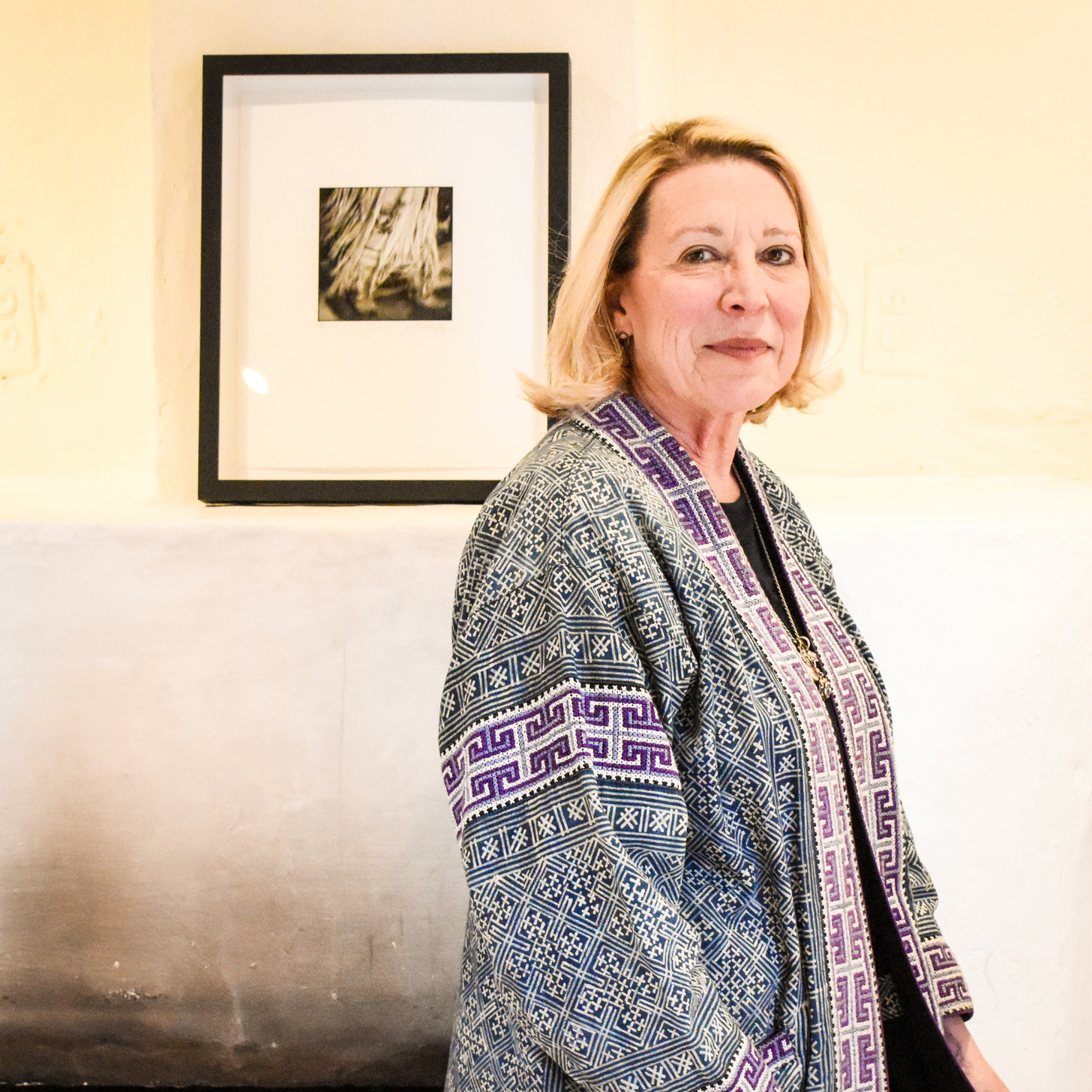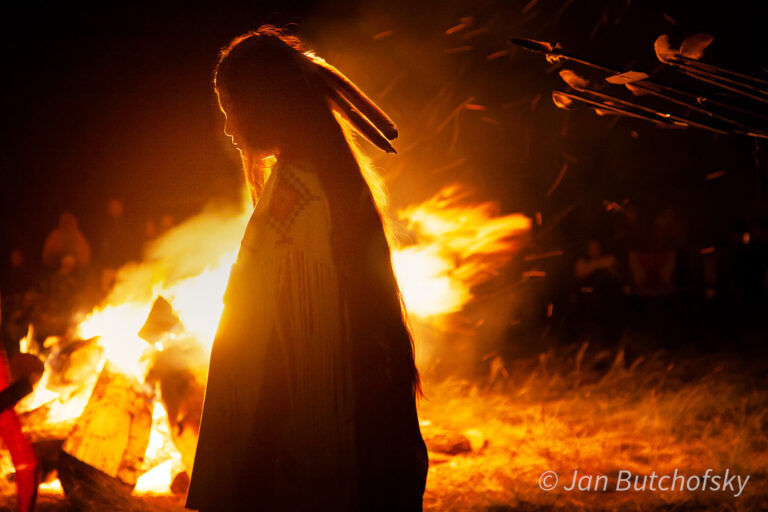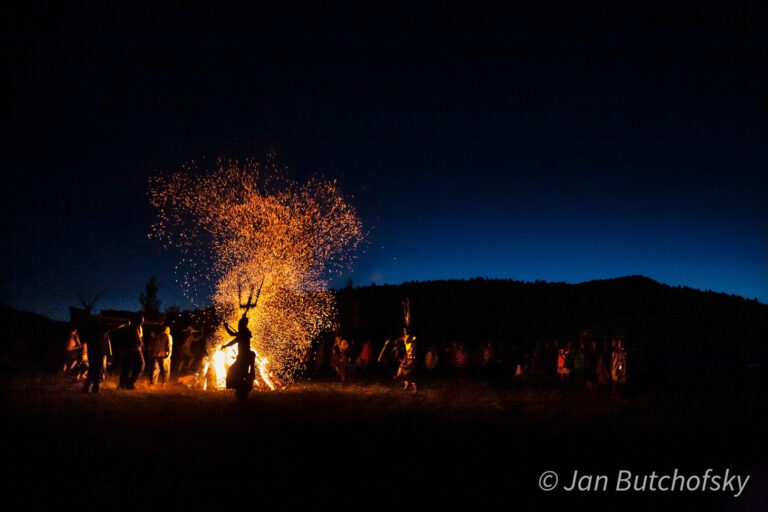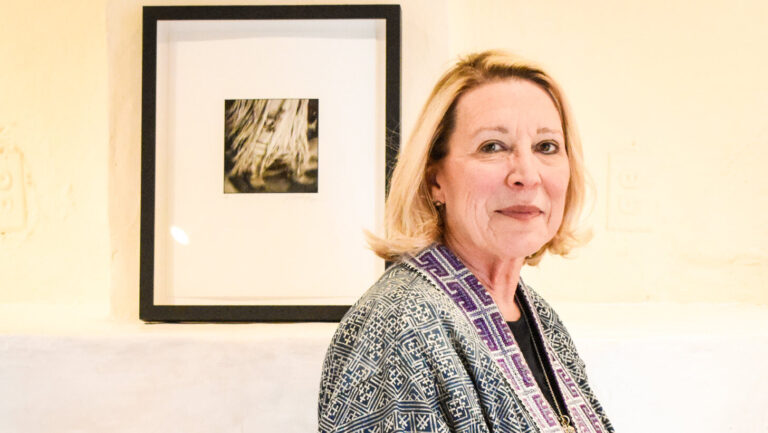Jan Butchofsky’s series Ceremony: Coming of Age documents two Mescalero Apache girls as they are initiated by their community into womanhood. Invited by the family, it is rare to have people from outside the Native community witness this ritual, and rarer still to see photographs of this four-day ceremony. Butchofsky is quick to remind anyone who asks that she is not claiming to be an outside authority on this ceremony, but is simply a photographer who is honored to have witnessed and photographed this community help these girls become strong young women. As is common refrain among photographers, she says she wants the photographs to speak for themselves. Weekly Alibi sat down with Butchofsky to talk about making pictures, establishing trust and photographing the Mescalero Apache maidens. The following is an edited version of that conversation.Weekly Alibi: What questions do people ask you about this series?Jan Butchofsky: The most frequently asked question is, “How did you obtain access?” I was asked to photograph the coming of age ceremony for the Mescalero Apache, for the family. It was a project that I did out of respect and love for the heritage of the Mescalero and the desire to help preserve their own heritage. As time went on, I realized that it was very special and I really wanted to share it a little bit more than just with the family. That took many conversations and time because I never intended to be exploitive of the sacred ceremonies that I was witness to. The family is very much in appreciation for how I’ve presented their ceremonies. They came to the opening. They’re very much a part of it.When you began the Ceremony project, did you think of it as a big project or something you were doing as a commitment to the family?Well, I had hoped it would be a bigger project, but I was willing for it to be whatever it was and let it become whatever it was to become. I knew that what I had witnessed and been able to film was very special. I thought I did a good job with it so I wanted it to have a bigger platform than just the family seeing it. Not that that’s not enough, but when I did exhibit and the families came, the elders most especially were so grateful to see it. They said, “We’ve never seen it documented before.” They didn’t even want to own the pictures. They just wanted to see them. I think that’s what made me realize that it is important work as far as helping to preserve what the tribe worked so hard to keep sacred.Do you prefer working as an embedded photographer? I prefer being immersed and I don’t always have that luxury. To you, what is the difference between taking a picture and making a picture?I’ve always felt that there’s a big difference in taking a picture and making a picture. First of all, just the concept of taking. I just don’t like the concept of taking something from somebody when it can be an interactive experience between the photographer, the camera and the subject. Whether the subject is a cow or a plant or a person, it’s not taking, it’s making. It’s collaboration. Much of your work is about telling the stories of ethnic minorities from around the world. How do you do that without objectifying or exploiting them? I think it comes from a genuine interest. What is this person doing? What is their day like? If they’re selling newspapers, what drove them to sell newspapers in a marketplace? Why are they passionate about it or not passionate about it? I find that when I’m photographing people, especially in their ceremony or their private moments of prayer, and they share that with me, they welcome me into their inner circle, it’s because of a great amount of trust. I don’t think that trust is ever developed unless you have an honest and true caring for that individual.How do you establish trust with your subjects?Sometimes it’s just catching an eye across the marketplace or in a church. Sometimes it involves a conversation. Often, it’s just an interaction or an intuition with that person. It’s never anything that I do sneakily or without their consent.Is it harder to photograph people you know or strangers?It’s harder to photograph people that I know. I know their nuances and I know what they like. Does that come from curiosity?It could be a curiosity. I’m running through my mind how many portraits I have of my dearest friends. I would say they’re probably mostly candids. How do you blend into the background when you’re shooting?Photographers are pretty boring people. I mean, we are looking through a lens and making pictures. Usually people will just forget that you’re even there and you can blend in.
Ceremony: Coming of Age
By Jan Butchofsky
On exhibit through April 18
Edition One Gallery
728 Canyon Rd., Santa Fe












